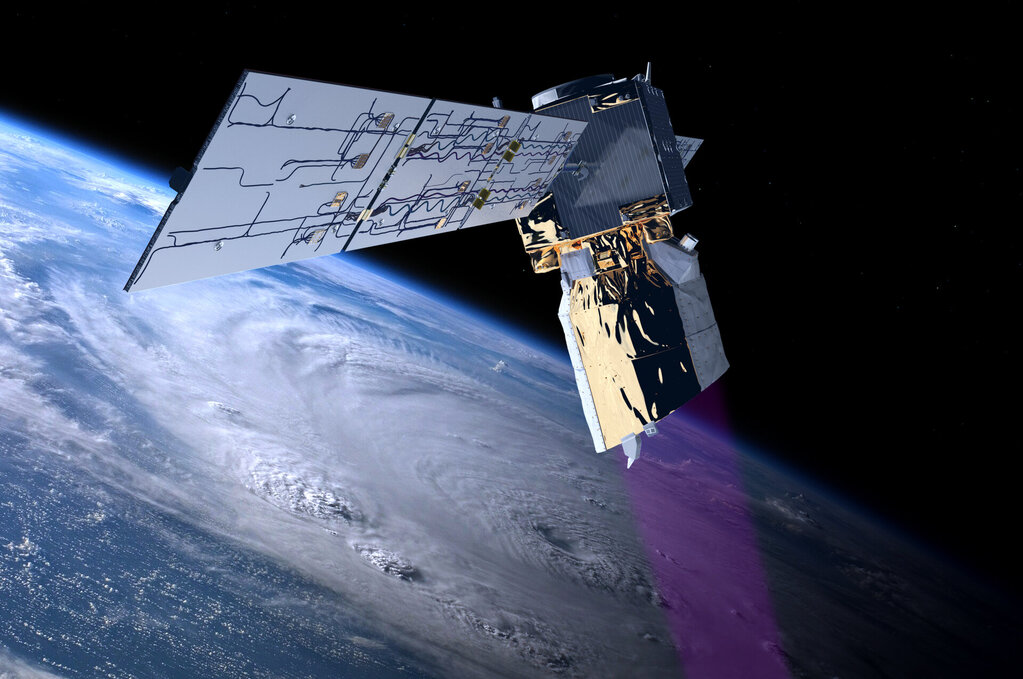US Space Command confirmed that ESA’s Aeolus satellite reentered Earth’s atmosphere on 28 July at around 20:00 BST/21:00 CEST above Antarctica in an assisted reentry that it was never designed to do.
Surpassing scientific expectations and exceeding its planned life in orbit, the Aeolus wind mission has been hailed as one of ESA’s most successful Earth observation missions.
And now, its end will go down in history, too, thanks to the ingenuity of the Agency’s mission control team who guided this remarkable satellite down to Earth’s atmosphere for a safe reentry.
ESA’s Aeolus mission, a groundbreaking venture aimed at profiling Earth’s winds, achieved a significant milestone on 28th July at approximately 21:00 CEST above Antarctica. The spacecraft reentered Earth’s atmosphere after a series of intricate manoeuvres that lowered its orbit from 320 km to just 120 km, ultimately leading to its safe disintegration upon reentry.

First Assisted Reentry of Its Kind
What makes this achievement even more remarkable is that it marks the first assisted reentry of its kind for a satellite. This innovative approach ensured that any surviving debris would fall within the satellite’s planned Atlantic ground tracks, mitigating the risk of potential damage to populated areas.
Preceding Regulations and Aeolus’ Unique Design
It is worth noting that satellite missions today are designed in compliance with regulations that prioritize minimizing the risk of harm upon their return to Earth. However, when Aeolus was conceptualized in the late 1990s, such regulations did not exist.
Consequently, without intervention, Aeolus would have naturally reentered Earth’s atmosphere within a few weeks from its fuel depletion, but with no control over the location of reentry.
Assessing the Risk
While the probability of harm from reentering satellites is typically low, ESA recognized the importance of going the extra mile to ensure public safety. The chance of being struck by debris from a satellite is approximately three times less than being struck by a meteorite.

A Complex Endeavor
The complex and ambitious endeavor to modify Aeolus’ trajectory involved meticulous planning and coordination among a team of spacecraft engineers, flight dynamics experts, and space debris specialists at ESA’s ESOC mission control center in Germany.
Over the course of a week, they utilized the satellite’s remaining fuel to conduct a series of controlled burns, carefully guiding Aeolus to its optimal position for reentry.
Against all odds, the team’s efforts bore fruit, successfully executing Aeolus’ reentry in accordance with current regulations. Rolf Densing, ESA’s Director of Operations, expressed his admiration for the achievement, highlighting how the knowledge gained from this feat may be applicable to future satellite missions approaching their end of life.
Embracing Zero Debris Approach
The assisted reentry of Aeolus aligns with ESA’s broader commitment to ensuring the long-term safety and sustainability of space activities. By 2030, the Agency aims to achieve ‘debris neutral’ status for all ESA missions, and the Zero Debris Charter plays a pivotal role in achieving this vision.
ESA’s proactive approach encompasses various strategies, including deploying deorbiting kits with missions to facilitate safe and controlled reentries, as well as pioneering missions like Clearspace-1, designed to capture and remove stranded spacecraft in orbit.
Aeolus: An Unyielding Mission
Aeolus, despite its challenging journey, emerged as one of ESA’s most successful Earth observation research missions. The spacecraft was equipped with ALADIN, Europe’s most advanced Doppler wind lidar flown in space.
Using innovative laser technology, Aeolus emitted pulses of ultraviolet light into Earth’s atmosphere, detecting wind speeds in the lowermost 30 km of the atmosphere on a global scale. This advanced capability made Aeolus the pioneer in delivering comprehensive Earth wind profiles.
Real-World Impact
Beyond its scientific contributions to climate research, Aeolus played a crucial role in operational weather forecasts. During the Covid lockdown, when grounded aircraft with weather instruments were scarce, Aeolus’ data proved indispensable.
Moreover, a 2022 report by London Economics estimated that Aeolus brought about real economic benefits, contributing up to €3.5 billion over its mission’s lifetime.
Looking Ahead: Aeolus-2
As the legacy of the first Aeolus continues to inspire, ESA sets its sights on Aeolus-2, an operational meteorological mission jointly developed with Eumetsat, Europe’s Organization for the Exploitation of Meteorological Satellites.
With the experience gained from Aeolus, ESA continues to drive innovation and sustainability in space exploration, solidifying its position as a leading force in the pursuit of a safer and greener future for space activities.

